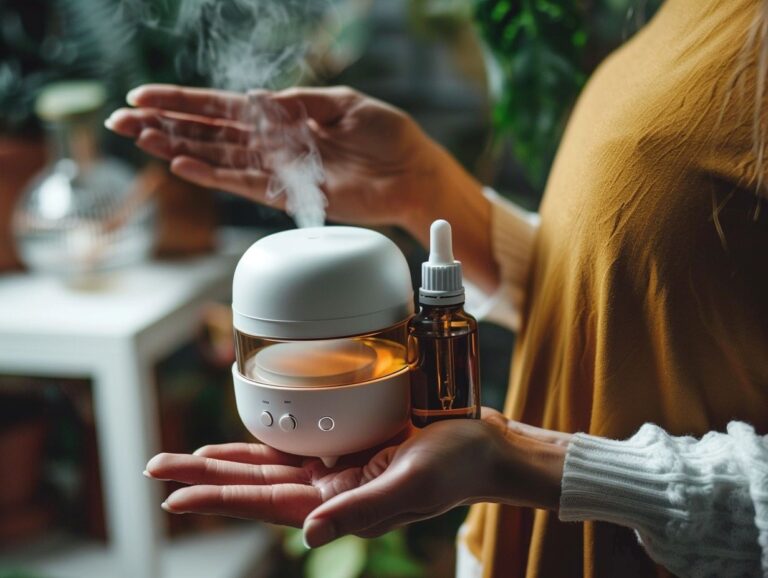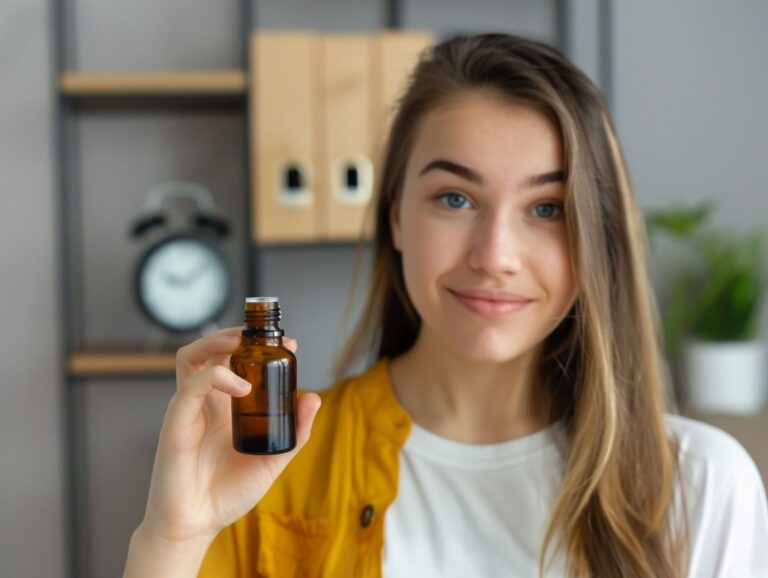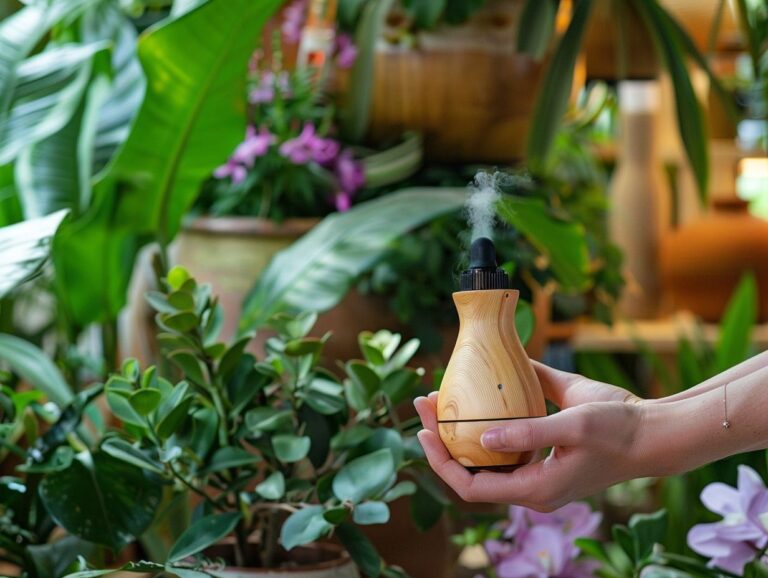Can You Make Bath Bombs Without Essential Oils
Have you ever wondered if it’s possible to make bath bombs without essential oils?
We will explore the world of bath bombs and essential oils.
From understanding what bath bombs are and how essential oils are used in them, to exploring the benefits and possible side effects of using essential oils in bath bombs, we will cover it all.
Discover alternative ingredients and recipes for essential oil-free bath bombs, and learn the pros and cons of using essential oils versus going oil-free.
Key Takeaways:
What Are Bath Bombs?
Bath bombs are a popular bath product set known for their luxurious and moisturizing properties, often used to create a spa-like experience at home.
The art of making bath bombs has evolved into a creative outlet for many individuals seeking a fun and rewarding activity. Typically, a bath bomb contains ingredients like baking soda, citric acid, Epsom salts, essential oils, and water which fizz and release pleasant aromas when dropped into a bath.
Moisturizing effects are a key benefit of using bath bombs, leaving the skin feeling soft and hydrated. For those interested in mastering the craft, there are online courses and workshops available that cover the intricate process of creating unique and personalized DIY bath bombs.
What Are Essential Oils?
Essential oils are concentrated oils extracted from plants that carry the natural fragrance and essence of the botanical source. These oils are highly sought after for their aromatic qualities and are commonly used in various applications.
With origins dating back centuries, these oils have been utilized in traditional practices like aromatherapy for their therapeutic properties. Plus their soothing scents, essential oils have been incorporated into skincare routines, offering benefits like hydration and rejuvenation. From eucalyptus for respiratory relief to lavender for relaxation, the uses of essential oils are diverse and versatile. Whether diffused for a calming atmosphere or added to DIY beauty products, these botanical extracts provide a natural and holistic approach to health and wellness.
How Are Essential Oils Used in Bath Bombs?
Essential oils play a crucial role in enhancing the fragrance and moisturizing properties of bath bombs when incorporated into the recipe. DIY enthusiasts often use essential oils to customize the scent of their homemade bath products.
Essential oils are derived from plants and are known for their aromatic and therapeutic properties. When added to bath bombs, they not only provide a delightful scent but also contribute to the overall moisturizing effect on the skin. The customized scents created by blending different essential oils reflect the personal preferences and creativity of DIY enthusiasts. Essential oils can offer additional benefits such as relaxation or revitalization depending on the type chosen, making bath time a truly immersive and rejuvenating experience.
Are Essential Oils Necessary for Making Bath Bombs?
While essential oils are a common ingredient in bath bomb recipes, they are not strictly necessary for making bath bombs. DIY bath bomb makers have the flexibility to explore different ingredients and scents beyond essential oils.
When crafting bath bombs, essential oils are often used for their aromatic properties, adding a touch of relaxation or invigoration to the bath experience. For those looking to innovate and personalize their creations, the world of alternative ingredients opens up a vast array of possibilities. Experimenting with ingredients such as dried flowers, herbs, or even fruit extracts can lend unique textures and scents to your bath bombs. By exploring different avenues, DIY enthusiasts can create bespoke bath bombs that cater to their specific preferences and needs.
What Are the Benefits of Using Essential Oils in Bath Bombs?

Incorporating essential oils like eucalyptus and peppermint into bath bombs can provide refreshing sensations and help alleviate congestion and muscle soreness. These oils not only stimulate the senses but also offer potential therapeutic benefits for respiratory issues and tension relief.
The use of citrus essential oils such as lemon or orange can uplift your mood and invigorate the senses, creating a revitalizing bathing experience. Their bright and refreshing scents make them perfect additions to morning baths or to start the day on a positive note.
What Are the Alternatives to Essential Oils in Bath Bombs?
For those seeking alternatives to essential oils in bath bombs, natural ingredients like lemon juice, coconut oil, and various fruit extracts can serve as effective substitutes for fragrance and skincare benefits. These natural elements are commonly used in crafting DIY bath bombs.
Other natural ingredients that can be used to replace essential oils in bath bombs include rosewater, cucumber juice, and even aloe vera gel. These ingredients not only add a delightful scent to your bath bombs but also offer unique skin-nourishing properties.
- One simple recipe that excludes essential oils involves mixing baking soda, citric acid, Epsom salt, and your choice of fruit extract to create fizzy and aromatic bath bombs.
- Adding dried herbs like lavender or chamomile can enhance the relaxation experience.
How to Make Bath Bombs Without Essential Oils?
Crafting bath bombs without essential oils involves exploring alternative ingredients to achieve fragrance and therapeutic effects. Natural bath bomb recipes offer a diverse range of options for DIY enthusiasts who prefer to omit essential oils from their creations.
One popular alternative to essential oils is using dried herbs and flowers to add both fragrance and visual appeal to your bath bombs. Rose petals, lavender buds, chamomile flowers, or even dried citrus peels can infuse your bath bombs with a lovely scent. Consider incorporating natural butters or oils such as cocoa butter, shea butter, or almond oil to moisturize and nourish the skin while in the bath. Experiment with natural colorants like spirulina powder, turmeric, or beetroot powder to add vibrant hues to your creations.
What Ingredients Can Be Used Instead of Essential Oils?
In lieu of essential oils, various ingredients such as lemon juice, coconut oil, and botanical extracts can be utilized to provide fragrance and skin benefits in bath bombs. These natural alternatives offer a unique twist to traditional bath bomb recipes.
When opting for lemon juice, the sharp and invigorating citrus scent can elevate your bath bomb’s aroma while boasting skin-brightening properties. On the other hand, coconut oil not only imparts a tropical fragrance but also moisturizes the skin deeply. Botanical extracts like lavender or chamomile infuse a calming and soothing essence to your bath experience, perfect for relaxation.
Integrating dried flowers, such as rose petals or calendula, not only enhances the visual appeal of your bath bombs but also contributes to their aromatic charm. Incorporating natural colorants like spirulina or turmeric adds a vibrant hue while offering skin-nourishing benefits.
What Are Some Recipes for Essential Oil-Free Bath Bombs?
Creating essential oil-free bath bombs opens up a realm of possibilities for unique recipes that focus on alternative fragrances and skin-nourishing ingredients. Popular options include the Super Foaming Bubble Bath Bomb Recipe and the Shea Butter Bath Bomb Recipe.
In terms of crafting bath bombs sans essential oils, one can get truly creative by incorporating ingredients like dried flowers, cocoa butter, or even citrus zest. Each variation offers distinct benefits for the skin, with options for moisturizing, exfoliating, or calming properties. Experimenting with combinations of clays, micas, and botanical extracts can result in visually stunning bath bombs that cater to different skincare needs. Embracing essential oil-free recipes allows for a wider audience to enjoy the luxurious experience of a soothing bath without any sensitivities or preferences hindering their enjoyment.
What Are the Possible Side Effects of Using Essential Oils in Bath Bombs?

Essential oils, derived from plants, contain concentrated aromas that can provide various benefits, from relaxation to skin nourishment. When these potent oils come in direct contact with the skin, they may cause adverse reactions in certain individuals. Skin sensitivities can manifest as redness, itching, or even a rash.
Citric acid powder is a common ingredient in bath bombs that not only provides effervescence but also works with essential oils to create a luxurious bathing experience. The acidic nature of citric acid can exacerbate skin sensitivities when in contact with essential oils. Properly diluting essential oils in carrier oils before adding them to bath bomb mixtures can help minimize the risk of skin reactions.
Can Essential Oils Cause Allergic Reactions?
Certain essential oils, particularly potent ones like lavender essential oil, have the potential to trigger allergic reactions in sensitive individuals when used in bath bombs. Skin tests and prior knowledge of personal allergies are crucial for preventing adverse responses.
While essential oils are commonly used in bath bombs for their aromatic and therapeutic properties, it is essential to be aware of the potential risks they pose.
Lavender essential oil, known for its calming scent, may still cause irritation or allergic reactions in some individuals. This highlights the importance of conducting a skin patch test before using bath bombs containing lavender or any other potent oil. Adverse reactions can range from mild skin irritation to more severe allergic responses, underscoring the significance of allergy awareness.
Can Essential Oils Be Harmful to Pets?
Pets, particularly cats and dogs, can be sensitive to essential oils present in bath bombs, posing potential health risks if exposed. It is crucial to keep bath bombs containing essential oils, such as lavender, away from pets and toddlers to prevent accidental ingestion or skin contact.
Essential oils, though beneficial to humans in aromatherapy, can be toxic to pets due to their unique physiology. Cats lack certain enzymes to metabolize essential oils effectively, making them more vulnerable to toxicity. Similarly, dogs’ heightened sense of smell can make exposure to strong scents overwhelming and harmful.
Wondering if you really need essential oils for bath bombs? Find out more about their benefits and potential risks.
To safeguard your furry friends, store bath bombs in a secure place out of their reach. Always supervise bath time with young children to ensure they don’t handle or ingest these products. If accidental exposure occurs, contact your veterinarian immediately for guidance on the next steps.
Conclusion: Essential Oils vs. Essential Oil-Free Bath Bombs
The choice between using essential oils and creating essential oil-free bath bombs ultimately depends on individual preferences, skin sensitivities, and desired effects. Both options offer unique advantages, allowing DIY enthusiasts to tailor their bath bomb recipes to meet specific needs and preferences.
Essential oils bring a wonderful aroma and therapeutic properties to bath bombs, catering to a wide range of preferences from uplifting citrus scents to relaxing lavender notes. On the other hand, essential oil-free bath bombs are ideal for those with sensitive skin or allergies, providing a gentle bathing experience without any added fragrances.
The beauty of DIY bath bomb crafting lies in the ability to experiment with various ingredients and create custom blends. Individuals can mix and match different oils or opt for a completely oil-free recipe, giving them full control over the final product. This customization allows for a personalized bathing experience, ensuring that each bath bomb is crafted to perfection.
Frequently Asked Questions
Can you make bath bombs without essential oils?

What ingredients can I use instead of essential oils in bath bombs?
Some alternatives to essential oils in bath bombs include dried lavender, rose petals, citrus zest, tea leaves, or natural food coloring for added scent and color.
Are there any benefits to using bath bombs without essential oils?
Yes, using alternative ingredients in bath bombs can provide added benefits such as relaxation from herbs or exfoliation from dried flower petals.
What are some other ways to add scent to bath bombs without using essential oils?
You can also use fragrance oils, dried fruit peels, or scented bath salts to add scent to bath bombs without using essential oils.
Can I make bath bombs without essential oils if I have sensitive skin?
Yes, using alternative ingredients in bath bombs can be a great option for those with sensitive skin who may have reactions to certain essential oils.
Is it possible to make bath bombs without essential oils for children?
Yes, using natural food coloring or child-safe scented oils can be a great alternative for making bath bombs for children without using essential oils. It is always recommended to do a patch test beforehand to ensure no allergies or sensitivities.








One Comment